Pakistan, the Indus land, is the child of the Indus in the same way as Egypt is the gift of Nile. The Indus has provided unity, fertility, communication, direction and the entire landscape to the country. Its location marks it as a great divide as well as a link between central Asia and south Asia. But the historical movements of the people from Central Asia and South Asia have given to it a character of its own and have established closer relation between the people of Pakistan and those of Central Asia in the field of culture, language, literature, food, dress, furniture and folklore. However, it is the Arabian Sea that has opened the doors for journey beyond to the Arabian world through the Gulf and Red Sea right into the ancient civilization of Mesopotamia and Egypt. It is this Sea voyage that gave to the Indus Land its earliest name of Meluhha because the Indus people were characterized as Malahha (Sailor) in the Babylonian records. It is for this reason that the oldest civilization of this land, called Indus Civilization, had unbreakable bonds of culture and trade link with the Gulf States of Dubai, Abu Dabi, Sharja, Qatter, Bahrain and right from Oman to Kuwait. While a Meluhhan village sprang up in ancient Mesopotamia (Modern Iraq), the Indus seals, painted pottery, lapis lazuli and many other items were exchanged for copper, tin and several other objects from Oman and Gulf States. It is to facilitate this trade that the Indus writing was evolved in the same proto-symbolic style as the contemporary cuneiform writing of Mesopotamia. Much later in history it is the pursuit of this seaward trade that introduced Islam from Arabia in to Pakistan. The twin foundations of cultural link have helped build the stable edifice of Islamic civilization in this country. All these cultural developments are writ-large in the personality of the people of Pakistan. As in many other countries of the world, man in Pakistan began with the technology of working on old stone by using quartzite and flint found in Rohri hills and stone pebbles found in the Soan Valley. The oldest stone tool in the world, going back to 2.2 million years old, has been found at Rabat, about fifteen miles away from Rawalpindi, thus breaking the African record. The largest hand Axe has also been found in the Soan Valley. Although man is still hiding in some corner, the Soan pebble stone age culture show a link with the Hissar Culture in Central Asia. Later about fifty thousand B.C. at Sangho Cave in Mardan District man improved his technology for working on Quartz in order to chase the animal in closed valleys. Still later he worked on micro quartz and chert or flint and produced arrows, knives, scrapers and blades and hunted the feeling deer and ibexes with bow and arrow. Such an hunting scene is well illustrated on several rock carvings, particularly near Chilas in the Northern Areas of Pakistan along the Karakorum Highway - a style of rock art so well known in the trans- Pamir region of Tajikistan and Kirghizstan. However, the first settled life began in the eight millennium B.C. when the first village was found at Mehergarh in the Sibi districts of Balochistan comparable with the earliest villages of Jericho in Palestine and Jarmo in Iraq. Here their mud houses have been excavated and agricultural land known for the cultivation of maize and wheat. Man began to live together in settled social life and used polished stone tools, made pots and pans, beads and other ornaments. His taste for decoration developed and he began to paint his vessels, jars, bowls, drinking glasses, dishes and plates. It was now that he discovered the advantage of using metals for his tools and other objects of daily use. For the first time in seventh millennium B.C. he learnt to use bronze. From the first revolution in his social, cultural and economic life. He established trade relation with the people of Turkamenistan, Uzbekistan, Iran and other Arab world. He not only specialized in painting different designs on pottery, made varieties of pots and used cotton and wool but also made terracotta figurines and imported precious stones from Afghanistan and Central Asia. This early bronze age culture spread out in the country side of Sindh, Balochistan, Punjab and North West Frontier Province. And this early beginning led to the concentration of population into small towns. Such as Kot-Diji in Sindh and Rehman Dheri in Dera Ismail Khan District. It is this social and Cultural change that led to the rise of the famous cities of Mohenjodaro and Harappra, the largest concentration of population including artisans, craftsman, businessmen and rulers. This culminated in the peak of the Indus Civilization, which was primarily based on intensive irrigated land agriculture and overseas trade and contact with Iran, Gulf States, Mesopotamia and Egypt. Dams were built for storing river water, land was Cultivated by means of bullock- harnessed plough - a system that still prevails in Pakistan, granaries for food storage were built, furnace were used for controlling temperature for making red pottery and various kinds of ornaments, beads of carnelian, agate and terracotta were pierced through, and above all they traded their finished goods with Central Asia and Arab world. It is these trade divided that enriched the urban populace who developed a new sense of moral honesty, discipline and cleanliness, and above all a social stratification in which the priests and the mercantile class dominated the society. The picture of high civilization can be gathered only by looking at the city of Mohenjodaro, the first planned city in the world, in which streets are aligned straight, parallels to each other, with a cross streets cutting at right angles. It is through these wide streets that wheeled carriages, drawn by bulls or asses, moved about, carrying well-adorned persons seated on them, appreciating the closely aligned houses, made of pucca bricks, all running straight along the streets. And then through the middle of the streets ran stone dressed drains covered with stone slabs - a practice of keeping the streets clean from polluted water, for the first time seen in the world. The Indus Civilization is the first literate Civilization of the subcontinent. The cities were centres of art and craft. Where the artisan produced several kinds of goods that were exported to other countries. Sailing boats sailed out from Mohenjodaro and anchored in the port of the Gulf, which region was perhaps known as Dilmin. However, it was the city administration that managed the urban life in strict discipline and controlled the trade in their hands. The discipline is derived from the strict practice of meditation (yoga) that was practiced by the elite of the city, who appear to have trimmed their beard and hair combed and tied with golden fillets. The body was covered with a shawl bearing trefoil designs on them. Such a noble man with a sharp nose and long wish eyes shows a contrast with a bronze figurine of a dancing and singing girl, plying music with her fully bang led hand, as we find today with the Cholistan ladies having bangled hands. Obviously there were distinctive ethnic groups of people in Mohenjodaro but the dominant class of rulers and merchants appear to be distinctive from the rest of the population. It is these literate people who inter- acted with the Arabian people and continued to maintain strict discipline in the society. It is they who developed astronomy, mathematics, and science in the country along with numerical symbols, weights and measures but they thoroughly intermixed in the society and also believed in the local cult of tree and tree deities and animal totems. The most prominent animals as attested in the seals are bull, buffalo, elephant, tiger, rhinoceros, alligator and deer and ibexes. However, Mesopotamian influences are seen in the figures of Gilgamash, Enkidu, joint statue of the bull and man and other animals with several heads and bodies. However, the unique local concept is that of highly meditative man, seated in his heels, with three or four heads, and combining in himself the power to control the animals probably with a crown of horns or some times a tree overhead. It is this supreme deity, depicted on Seals, that draws the serpent worshippers and overpowers the animals. A part from these there was no concept of nature worship as we find in the Vedas of the Aryans. The ritual consisted of offerings through the intermediary of mythological composite animals to the tree deity. These dose not appear to have been any concept of animals sacrifice nor worship of any idol or idols. The Indus civilization lasted for nearly five hundred years and flourished up to 1750 B.C. when we notice the movements of nomadic tribes in Central Asia. As a result the Asian trade system was greatly disturbed. Consequently the trade and industry of the Indus people greatly suffered with the result that led to the end of the Civilization. The cities vanished, the noble lost their position. The writing finished. The common people met with the influx of new horse-riding pastoralists who hardly understood the system of irrigated agriculture and hence the value of dams. Such nomadic tribes are known from the large number of graves and their village settlements all over Swat, Dir and Bajaur right up to Taxila. In the Northern Areas of Pakistan different group of such tribes, known as Dardic people are known from their graves. The tribes of the plains are recognized as different groups of the Aryans from the hilly tribes of the North- the ancestors of the Kalash people and those who now speak Shina, Burushaski and other Kohistani languages. They had nothing to do with the cities as we find them building small villages nor did they know irrigation. Infect they believed in nature gods, one of them Indra destroyed the dams and spelled disaster on the local Dasyus who differed from them in colour, creed and language. These Aryans conquerors developed there own religion of the Vedas, practiced animal sacrifice and gradually built up tribal kingdoms all over the Indus Valley. The most prominent being that of Gandhara with capitals at Pushkalavati (modern Charsadda) and Taxila, the last having been the older capital of Takshaka, the king of serpent worshippers. Taksha-sila (a Sanskrit word, literally translated in to Persian Mari-Qila) survive in modern Margala. It become the strong hold of the Aryans, whose great epic book Mahabharata was for the first time recited here. Since that time Takshka-sila or Taxila lying on the western side of Margala remained the capital of the Indus land, which was called Sapta- Sindhu (the land of seven rivers) by the Aryans. It because of this central location, en routs from Central to South Asia that the new capital of Pakistan has been established at Islamabad on the eastern side of Margala hill , thus giving a historical link from the most ancient to modern time and new significance to Pakistan as a link between Central and South Asia. The city of Taxila began to grow from 6th century B.C. onward when Achaemenian kings by name Cyrus and Darius joined this city by road and postal services with their own capital at Persepolis in Iran. Here one can see the Aryan village at Hatial mound lying above the pre-Aryan bronze age capital of Takshakas (Serpent worshippers). One can also visit the Achaemenian city at Bhir mound, where old bazaars and royal palace, with long covered drain, have been discovered. Land rout trade with Iran and the west once again started with the issue of coin currency for the first time in the Indus land. But the most important was the great use of iron technology, which produced several kind of iron tools, weapons and other objects of daily use as known as from the excavations at Taxila. Above all a new writing known as Kharoshti was developed here. At the same time the oldest University of the world was founded at Taxila, where taught the great grammarian Panini, born at the modern village of Lahur in Sawabi district of the Frontier Province. It is the basis of this grammar that modern linguistics has been developed. It is in this University that Chandra Gupta Maurya got his education, who later founded the first sub continental empire in South Asia. He developed the Mauryan city at Bhir mound in Taxila, where ruled his grandson, Ashoka, twice as governor. He introduced Buddhism in Gandhara and built the first Buddhist monastery, called Dharmarajika Vihara, at Taxila. Ashoka has left behind his Rock Edicts at two palaces, one at Mansehra and another at Shahbazgari, written in Kharoshti. Long before the rise of Chandra Gupta Maurya the Achaemenian empire, that had extended from Pakistan to Greece and Egypt, had collapsed under the onslaught of Alexander of Macedonia. He first finished with the Greek city states, united the Greeks, and dashed forward to annex the Achaemenian empire and hence proceeded to all those places where the Achaemenian had ruled. In this march they come to Taxila in 326 B.C. where he was welcomed by the local king Ambhi in his palace at Bhir mound. It is here as well as at Bhira in Jhelum district that Alexander's remains can be seen. However, he fought the greatest battale on the bank of the Jhelum river opposite the present village of Jalalpur Sharif against Porus, the head of the heroic Puru tribe, whose descendents still supply military personal to the Pakistan army. Alexander's battle place was at Mong, where he founded a new city, called Nikea, the city of victory. The other city which he founded was called Bucaphela after the name of his horse that died here. However, the most captivating site is at Jalalpur Shaif, laying on the bank of rivulet Gandaria, perhaps Sikanaria, where Alexander's monument has now been built on the spot where he stopped for about two months before launching his attack on Porus. The Achaemenian and Alexander's contacts with Pakistan are very important from the point of view of educational and Cultural history. The Achaemenian brought the learning and science of Mesopotamia Civilization that enriched the University of Taxila. They also introduced their administrative system here, on the basis of which the famous book on political science, called Arthasastra was written in Sanskrit language in Taxila by Kautilya, known as Chanakya, the teacher of Chandra Gupta Maurya. It is this book that was adapted for the administrative of the Mauryan empire. On the basis of Achaemenian currency the Mauryan punch marked coins. So well known in Taxila, were produced. It is their Aramaic writing, used by Achaemenian clerks, that led to the development of Kharoshti in Pakistan and trade with the Semitic world that created the Brahmi writing in India. On the other hand Alexander brought Greek knowledge and science to Taxila and introduced Greek type of coin currency. It is Taxila that philosophers and men of learning of the two countries met and developed science, mathematics and astronomy. Above all Alexander left behind large number of Greeks in Central Asia, who founded the Bactrian Greek kingdom in mid-third century B.C. it is the descendants of these Bactrian Greeks who later advanced in to Pakistan and built up the Greek kingdom here and built up their own city at Sirkap in Taxila. This is the second well planned city in Pakistan. The Greeks introduced their language, art and religion in the country of Gandhara, where ruled thirteen Greek kings and queens. Their language lasted more than five hundred years and their art and religion and considerable influence on the flourish of Gandhara Civilization. This civilization was the result of interaction of several peoples who followed the Greeks, the Scythians, the Parthians and Kushans who came one the other from Central Asia along the Silk Road and integrated them selves into the local society. It is under their patronage that Buddhism evolved here into its new Mahayana form and this become the religion of the contemporary people in Pakistan. Under their encouragement the Buddhist monks moved along the Silk Road freely and carried this religion to central Asia, China, Korea and Japan. It is again the trade along the silk road that was particularly controlled by the Kushana emperors, who built a mighty empire with Peshawar as their Capital, the boundaries of which extended from the Aral Sea to the Arabian Sea and from Afghanistan to the Bay of Bengal. It is the dividends of trade that enriched Pakistan and led to the development of Gandhara Art, which mirrors the social, religious and common man's life of the time. It is an art that was blend of the Greek classical and local arts, which created the finest statues of Buddha and Buddhisatttvas that today decorate the museums all over the world. At the same time the sculpture depict the whole life of the Buddha in a manner that is unsurpassed. Many Greek themes, their gods, typical toilet trays, Greek life scenes showing musicians, drinking bouts and love making are presented in there natural fashion. The Kushanas period was the golden age of Pakistan as the Silk Road trade brought unparalleled prosperity to the people of the country. The luxury items produced in the country enrich the museum at Taxila at that show the Cultural and trends of life of the time. Gandhara art is the high water achievement of the people of Pakistan. Mahayana Buddhism was the inspiring ideal of the time and the Buddhist stupas and monasteries survive in every nook and corner of the hills. It was this time that the country was known as Kushana-shahar, the land of the Kushanas, to which came the Romanships to carry the luxury goods in exchange for Roman Siler and Gold, that were used by the Kushana emperors and as a result their gold currency flooded the country and all along the Silk road. It is these Kushana kings who have gifted the national dress of shalwar and kamiz and sherwani to Pakistan. Their dress and decorations are deeply imprinted on the Indus land, that is now Pakistan. Then came from Central Asia the Huns and the Turks who gave to Pakistan the present ethnic, their Culture, Food and Adab. The Jats, Gakkhars, Janjuas (Jouanjouan of the Chinese) and Gujars all trekked into Pakistan and made their home here. The Rajput rose and founded the feudal system in Punjab and Sindh in the same way the Pashtuns, who borrowed the surname of Gul and later the title of Khan from the Mongols, their Sardari system in Balochistan, and slowly developed the Wadera practice in the Indus delta region of Sindh. This feudal arrangements, which was the result of confederated tribes of the Huns, led to new administrative system in the country and created a new form of land management that has lasted until today. The tribes have fused into the agricultural society but their brotherhoods have survived and they have given a permanent character to Pakistan. In the early eight Century A.D. the Arabs brought Islam in Sindh and Multan built up the kingdom of Al-Mansurah in Sindh. At the same time their east ward Sea trade introduced porcelain and called on were from China and popularized glass were from Iran Syria- new materials that can be seen in the excavations at Bambhore in Sindh. With the Muslims Turks came the Sufis and Dervishes from Central Asia. Iran and Afghanistan and they spread Islam all over the country. It is Sultan Mahamud of Ghazni who made Lahore- the city of Data Sahib as his second capital. However, the city of Multan become famous as the city of Saints although it lay en route the camel caravan that carried on trade between Pakistan and Central Asia right up to Baku in Azerbaijan. It is these cities that the famous Muslims monuments of old are to be seen. As a result of the Saintly activity Pakistan become a land of Islamic Civilization. In several villages and cities we now find the Dargah of these Muslims Saints. While Shahbaz Kalandar is a well known in Sindh, Baba Farid Shakarganj resided over Pak Pattan in Punjab, Buner Baba rules over the Frontier region, and Syed Ali Hamdani is the real Sufi Saint in Kashmir. The capital city of Islamabad enshrines the well known Golra Sharif and Barri Imam. It is in these Saints who influenced the development of Sufi literature in all the languages of Pakistan and their monumental tombs that attract the people from all the country. In the old city of Thatta at Makli hill several tombs and Mausoleums are spread over the place that surpass in the beauty of stone carving but much more than this they evidence the historical evolution of architecture from 12th century A.D. to the Mughal time. This was a period of great change in the historical integration of the people in Pakistan when the country was brought closer to Central Asia and the Arab world. The mixing of several tribes from both these regions transformed the ethnic complex of the country. Just as in the period of Kushanas of Mahayana type rose here and the Buddhist monks out from this land along the Silk road to carry the massage of the Buddha, now it was the Arabs and the Muslims Saints from Central Asia who came in the reverse direction and flocked in the prosperous land of Pakistan. New trade route were opened in the reverse direction from those countries into the Indus land. From the Huns to the Turks the age of cavalry dominated the life scene. Many Rock carvings in Central Punjab show men riding, even standing on horse back and brandishing their swords and shooting arrows. Hence forward Polo game become common and sword dance was common, as seen in the Rock carving near Chilas. The foundation of Muslims state was firmly laid, in which the dominate position first occupied by the Arabs in Sindh and Multan and later by the Gaznavid and Ghorid Sultans who made the Indus country as their spring board from the onward conquest of India. A beautiful monument in memory of sultan Ghori can be seen at Suhawa on the National Highway. It was therefore in the fitness of things that the first missile made in Pakistan was named after Ghori. Several Muslims kingdoms grew up in this country. Beginning from north we find the Tarkhan ruling dynasty, who came from trans-pamir region here and become supreme in the Gilgit area. The descendent of Shah Mir founded the Muslims Sultanate in Kashmir maintained its independents until the time of the Mughal emperor Akbar. The Pushtun tribes made their movements and asserted their independence in the land watered by the western branch of the Indus River. The Langhas and later the Arghuns become the Master of Multan. The Sama ruling dynasty started a new era of Cultural development and prosperity in Sindh. The Baluchis in concert with Brahuis leapt forward not only to build their kingdom in Balochistan but also migrated eastward and northward. Apart from these political shape of the country, there was an unparalleled development in art and architecture, literature and music, and particularly new social integration took place on the basis of the patronage of local languages, such as Baluchi, Sindhi, Panjabi, Pashto, Kashmiri, Shina and Burushaski. All these languages received literary form with the support of the Muslims rulers and the first time their literatures began to take shape. They received influence from Arabic and Persian and added many themes from the Folklores as well as from those of Central Asia. Such an unusual developments transformed the society with the stories from Shahnama and Hazar Dastan and with the Folk-tales from Lila-Majnun, Sassi-Punnu and Hir-Ranjha. The stringed instruments, the dholak and the dhap and also flute and trinklets gave a new tone to the life of the people of Multan, Thatta, Marha Shrif in D.I. Khan, Swat and Kashmir, and finally Gilgit, Hunza and Baltistan created the finest architecture of the time. That was the period of new religious activity in the country side when Islam become the dominant religion of the people who were directly linked in religious ties with the people of Central Asia, Iran, Afghanistan, Turkey and Arab world. The migrant people had brought the new technology of straining the horse from Central Asia and Iran. Were ever the horse galloped right up the corner of Bengal and Orissa, the Turks and Afghans advanced from Pakistan and established new empires. Here the artisans and craftsman gathered in new centre, cities began to grow with new craft mohallas, and they began to specialise in the products of Shawl and carpets in Kashmir, chapkan, chadar and dopatta in Punjab and Chitral and Northern Areas, tile work in Multan, Hala and Hyderabad, block printing in Sindh and fine carpentry in Chiniot, Bhira and Dera Ismail Khan. As a result several families occupied themselves in traditional crafts and passed them on to their own children. Then came the Mughal emperors, descendent of Amir Timur, who, following the Mongol ruler Changiz Khan, had embarked on building a new world empire on the basis of organizing a new type of cavalry and making a new disciplined army in the unites of hundred and thousand. The later still survive in the name of Hazara both in Pakistan and Afghanistan. The first Mughal emperor, Zahiruddin Muhammad Baber, who had to come out from Farghana, brought a new taste of poetry, baghicha and architectural forms from the natural environment and landscape from Farghana and Samarqand, latter city reflecting the delicious water of Zarafshan (golden) river. Baber built his first terraced garden in Kabul and then choose the beautiful spot at Kalda or Kallar Kahar in Chakwal district and built here Bagh-i-Safa on the very spot marked by this throne seat. It was again terraced garden watered by a near by spring. At the old Bhira on the bank of Jhelum he built a fort and then proceeded to Shah Dara (the Royal pass Gate) that opened his route the city of Lahore. At Shah Dara several garden were laid by by the Mughal noblemen but only one is preserved inside Jahangir tomb that was built by his queen Nur Jehan who lies buried in another mausoleums. The tomb along with the garden is now desolate. There is also Kamran's baradari, without the garden, that still defies the flood of the Ravi river. When the Mughal emperors followed Baber one after the other, they choose the old Lahore on the bank of Ravi to their main Urban centres in Punjab. It was developed as a city of gardens with numerous gardens around but the main Mughal fortress was built in an Island, surrounded by the Ravi on the three sides and only on the east it was joined to the city proper. Here third Mughal emperor Akbar transferred his capital from Agra to meet the challenge of cousin Mirza Hakim. Here he laid the foundation of a typical Mughal citadel with royal residences, called Akbari Mahal and Jahangiri Mahal, with a prominent Diwan-i-Aam built in the traditional Iranian style, all constructed in red sand stone imported from Rajistan. Later Akbar's grandson Shah Jehan, the King of architecture, transformed many buildings and renewed to his taste with white marble. He added Diwan-i-Khas that overlooked Ravi, his palace and Turkish Bath and still more important the Moti Masjid, the gem of monuments, with beautiful decorative designs in precious stones set in marble. However, his choicest building is the Shish Mahal, the Mirror Palace that was the constructed by the side of a Char-bagh style garden with running water channel and fountains, but later destroyed by the Sikhs, and quadrangles remodelled. Such garden, called Mehtab, can be seen in other quadrangles in the Fort. The Shish Mahal is the luxurious place of resort particularly during summer months with rest rooms of a long hall at its either end, opening on to the brilliantly dazzling Veranda that looks at the marble paved quadrangle with a fountain in the middle side. The mirror reflects the stars and the bedrooms presents, in its ceiling, the panorama of a star lit Sky. On the western side there is a unique building of Bengali style, called Naulakha, whose brilliance of precious stone outshone the natural setting of flowers and tree leaves that decorate the walls. Alas ' the Sikh and British soldiers have robbed many of the precious stones. Even then the Shish Mahal, even in its changed character by the Sikhs, presents a dazzling brilliance in its perfect creation by the Mughal emperor Shah Jehan. It is the climax of Mughal luxury surpassed nowhere in the world. The exterior wall of the Shish Mahal one can see the beautiful mosaic paintings that depict everyday sport of the Mughal princes for the enjoyment of the people who used to gather below the fort not only to have a view of the emperor sitting in the Jharokha but also to admire the brilliance of colour on the wall. Here one can observe galloping horses, humped camels, elephant ride, hunting scene, animal fights, horse man plying polo or chaughan, camel fights, figures of angels, demon head sand moving clouds, horse and elephant riders crossing Swords and verities of floral and geometrical designs. There are three gates to enter the fort, all three of them showing different tastes. The Masti (or correctly Masjid) Gate on the east shows Akbar's taste of red sand stone. The Shahburj gate on the west presents the fine mosaic decorations of the time of Janhangir. The last is the Alamgiri gate built by Emperor Aurangzeb, showing tasteful simple entrance with multiple facetted Tower at either end, crowned by Kiosks. From Shish Mahal one can have a magnificent view of the Badashahi Masjid built by Aurangzeb on a spot regained after the river Ravi shifted further away. Its magnificent Stair way leading to the elegant red sand stone gate way on the east is highly impressive. It is on the left side that later the tomb of Allama Iqbal was built. The gate way, which is preserved the relic of the Prophet and also in one of the copy of the Holy Qur'an with brilliant calligraphy, leads into a wide open courtyard, having a washing pond in its middle, and rows of cells on its sides. On its west is the main prayer chamber of oblong shape marked by four tall corner towers. On its roof are three marble dooms of bulbous shape that attract the eye from a long distance. The interior of the mosque has chaste decoration in the mehrab chamber that opened in to equally well decorated side aisles. It has a Verandah on the front that is again tastefully decorated. But the most elegant are the tall towers at four corners of the quadrangle, from the top of which one can have an unforgettable view of the city of Lahore. There are two other beauties in the city of which the greatest monumental gems of Lahore. The first is the most chaste fully painted mosque of Wazir Khan, which was once the centre of religious and educational activities during the Mughals period. In its original design the mosque was fronted by an open maidan that presented from a distance a marvellous view of the mosque. It was built by Ilmuddin Ansari, hailing from the old trading city of Chiniot, but later he gave rise to the city of Wazirabad. He was raised to the high post of governor by Shah Jehan for his devoted service and great skill of Hikmat. But of greater importance in his taste of decorative architecture which he has translated into this mosque. The mosque plan, which is typical Mughals style but for its squat domes has tall minarets crowned by tasteful Chhatris. The most attractive is the mosaic ornamentation of the facade, the minars, and particularly the mihrab, which remains unsurpassed in its setting and choice of decorations and calligraphic work. In its charging decoration the mosque symbolises high sense of taste and marks a magnificent attraction in Lahore, to which both Shah Jehan as well as his officials gave a new face of colour and charm. And yet the greatest jewel of the city of Lahore is the Shalimar Bagh, the unique pleasure resort that has been gifted to the world by the Mughal emperors. With paying a visit to this garden one can hardly understand the Mughal love for pleasances. In its creation what a real pleasure they have bestowed to the people of Lahore. The garden sumbolises the elixir of life that the Mughals alone could imagine. They had long left Farghana but the beauteous charm of its terraced fields lingered behind that has been recaptured in the Char bagh style of the garden in Shalimar, as Taj Mahal in Agra is the symbol of unforgettable love of emperor Shah Jehan, in the form of unique architectural creation, for the beloved queen Mumtaz Mahal, so is the Shalimar, the epitome, of Shala (fire of love), the embodiment of the highest playful joy in life that the emperor and empress could have in this world. The garden is a combination of Char baghs, water channels, fountains, Cascades, water falls and bathing hall in three different terraces, each terrace headed by beautiful pavilions for a pause of pleasurable enjoyment and then to pass on the other ponds of joy, inset with showering fountains, each terrace presenting varieties in scenic complex. Starting from a elaborate gate way in the south , with a water fountain in its middle chamber, we enter the open space, surrounded on right and left, by residential quarters, having long walkways, in the middle of either side of a channel marked by fountain, that join together on the four sides on a watery platform. And then we pass to the first pavilion that looks at a square pond remarkable sitting a cascade of a water falling down below the pavilion, series of fountains around a central seat for musicians and dancers and smaller pavilions at the four corners. From the top pavilion the elite royalties draw their pleasure from the scenic panorama in front and from the corner pavilions guests could roll in pleasance and enjoy the music of the running fountains coupled with the music of the singers and dancers. The next lower terrace begin with a rare bathing hall in the middle with water fountains lower down and lighted lamps in the arched niches of the walls. Here one could cool the legs during summer months- a novel way of cooling the atmosphere in the days when there were no electricity and air conditioners. And thus we find here a thrilling atmosphere where natural art has been channelised in the service of man. What a creation of charming loveliness that is combined with cooling water in various forms to soothe the evening of warm Lahore. That is not all of Mughal architecture. If one likes to see the Mughal fondness for hunting, one can go to Sheikhupura, not far from Lahore , and admire the construction of Hiran Minar by Emperor Jahangir on the spot where his dearly loved deer died. That minar stands by the side of a tank which has in its middle a three storied pavilion for a general view around. If one is interested to see the defence arrangements of the Mughals, one can go to Attock on the bank of the Indus River, where Akbar built a magnificent fort, made arrangements for crossing the river by boat-bridge and laid a new road south of the Kabul river leading to Peshawar through the Khyber pass to Kabul. And then come to Attock the empress Nur Jahan, who constructed here a caravan serai, known as Begum Ki Serai, with a platform at its four corners and living rooms cooled by the Indus breeze. It is from one of the top platform that one could look at the magnificent expanse of the Indus River, full of flowing life and natural beauty, that perhaps will remain as the lasting memory of the Indus land, that is Pakistan. |









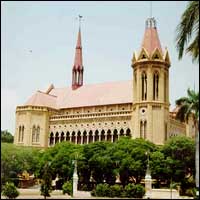
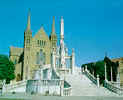
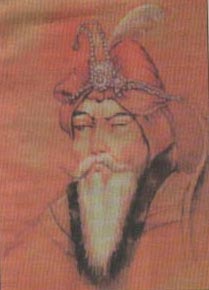
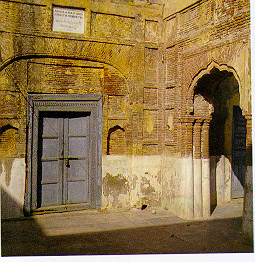
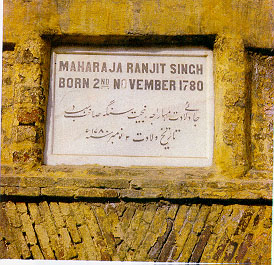

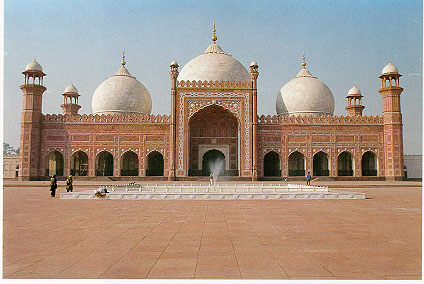
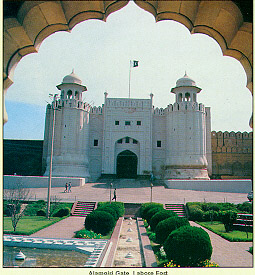

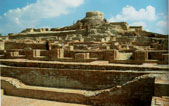
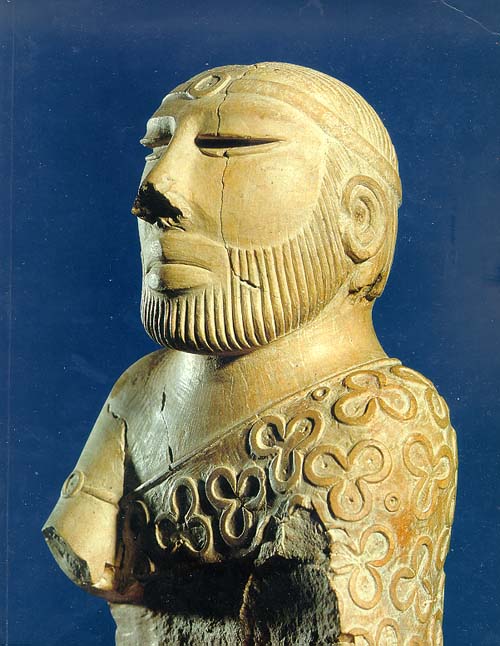
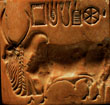
Join The Community